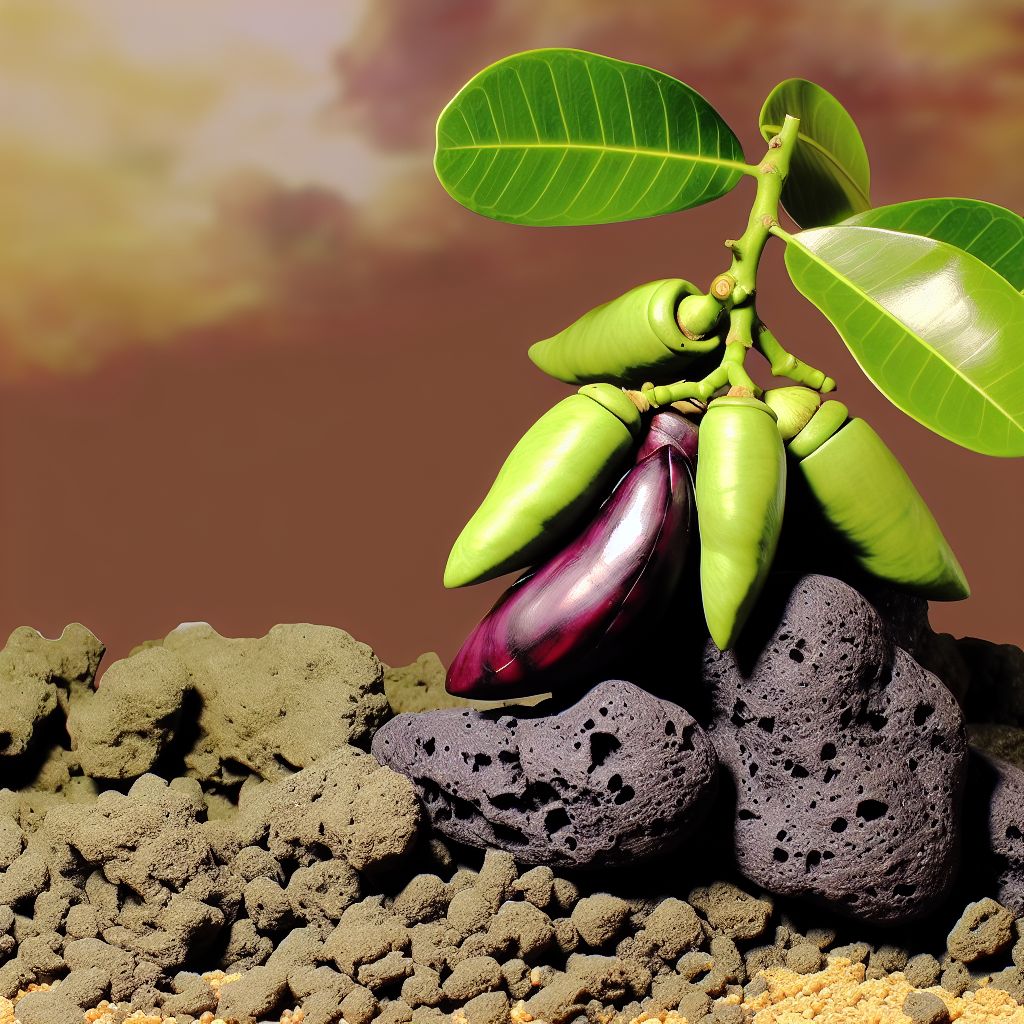Deutsch: Pili / Español: Pili / Português: Pili / Français: Pili / Italiano: Pili
Pili refers to the edible nuts of the Pili tree (Canarium ovatum), which is native to the Philippines. The tree is part of the Burseraceae family and is known for its hardy nature, thriving in the volcanic soil of the Bicol region of the Philippines. Pili nuts are celebrated for their rich, buttery flavor and high nutritional value, making them a prized ingredient in both savory dishes and desserts.
Description

Pili nuts are often compared to almonds and macadamia nuts in terms of taste and texture, offering a unique combination of a crunchy yet creamy consistency. They are encased in a hard shell that requires significant force to crack open, protecting the edible kernel inside. Beyond their consumption as a raw or roasted snack, pili nuts are used in a variety of culinary applications, including in the making of sweets, pastries, and confectioneries, as well as being incorporated into traditional Filipino dishes.
Nutritionally, pili nuts are a source of healthy fats, magnesium, phosphorus, and potassium. They are also rich in Vitamin E, making them an excellent antioxidant. Their high oil content, which is comparable to that of olive oil, is also valued for culinary and cosmetic uses.
Application Areas
In the Philippines, pili nuts are most commonly used in confectionery and baking. They are a key ingredient in local delicacies such as:
- Pili nut candy: Caramelized pili nuts coated with sugar or honey.
- Pili nut brittle: A hard candy made with caramelized sugar and whole pili nuts.
- Pastries and chocolates: Finely chopped or ground pili nuts are used to enhance the flavor of cookies, cakes, and chocolates.
Pili nuts are also gaining popularity internationally as a superfood due to their health benefits and are being incorporated into a variety of health-conscious and gourmet foods.
Well-Known Examples
One of the most iconic pili nut products is the Mazapan de Pili, a sweet, chewy candy made from ground pili nuts and sugar, often wrapped in colorful cellophane. Another is Pili nut brittle, which showcases the nut's delightful crunch and flavor amidst a sweet matrix.
Treatment and Risks
Pili nuts are generally considered safe to eat and beneficial to health, thanks to their nutrient-rich profile. However, as with any nut, there is the potential for allergic reactions in some individuals. They are also high in calories and fats, so moderation is recommended, especially for those monitoring their calorie intake.
Similar Terms or Synonyms
While there are no direct synonyms for pili nuts, they are often mentioned in the context of other nuts and seeds considered to be superfoods, such as almonds, macadamia nuts, and walnuts, due to their nutritional benefits.
Articles with 'Pili' in the title
- Pili-Pili sauce: Pili-Pili sauce : Pili-Pili or pilipili sauce, which is pronounced as pee-lee pee-lee, refers to a sauce made from hot red peppers and also the dishes cooked with these peppers or sauces
Summary
Pili nuts are a cherished food product from the Philippines, known for their delicious, buttery flavor and versatile culinary use. They have transcended their local origins to gain recognition on the international stage as a nutritious and gourmet ingredient. Whether enjoyed as a snack, used in traditional Filipino recipes, or incorporated into modern health foods, pili nuts continue to delight palates around the world.
--
Related Articles to the term 'Pili' | |
| 'Pili-Pili sauce' | ■■■■■■■■■■ |
| Pili-Pili sauce : Pili-Pili or pilipili sauce, which is pronounced as pee-lee pee-lee, refers to a sauce . . . Read More | |
| 'Mascarpone' | ■■■■■■■■■ |
| Mascarpone is a rich, creamy Italian cheese made from cream and citric or acetic acid. It is a key ingredient . . . Read More | |
| 'Huckle Berry Ice Cream' | ■■■■■■■■ |
| Huckle Berry Ice Cream: Huckleberry Ice Cream in the food context refers to ice cream flavored with huckleberries, . . . Read More | |
| 'Albay' | ■■■■■■■■ |
| Albay is a province in the Bicol Region of the Philippines, renowned for its rich culinary heritage that . . . Read More | |
| 'Lebkuchen' | ■■■■■■■ |
| Lebkuchen is a traditional German baked Christmas treat, somewhat akin to gingerbread. It is made from . . . Read More | |
| 'Saging na Saba (Hilaw)' | ■■■■■■■ |
| Saging na Saba (Hilaw) refers to the unripe, green version of the Saba banana, a type of cooking banana . . . Read More | |
| 'Cornbread' | ■■■■■■■ |
| Cornbread is a traditional bread made primarily from cornmeal, which is a coarse flour ground from dried . . . Read More | |
| 'Soursop' | ■■■■■■■ |
| Soursop, also known as graviola, guanábana, or Brazilian paw paw, is a fruit native to the tropical . . . Read More | |
| 'Shortbread' | ■■■■■■■ |
| Shortbread is a traditional Scottish Biscuit known for its rich, buttery flavor and crumbly texture. . . . Read More | |
| 'Aceite' | ■■■■■■ |
| Aceite is the Spanish word for any kind of edible \'Oil\'. Among the Edible oils used for cooking are: . . . Read More | |
